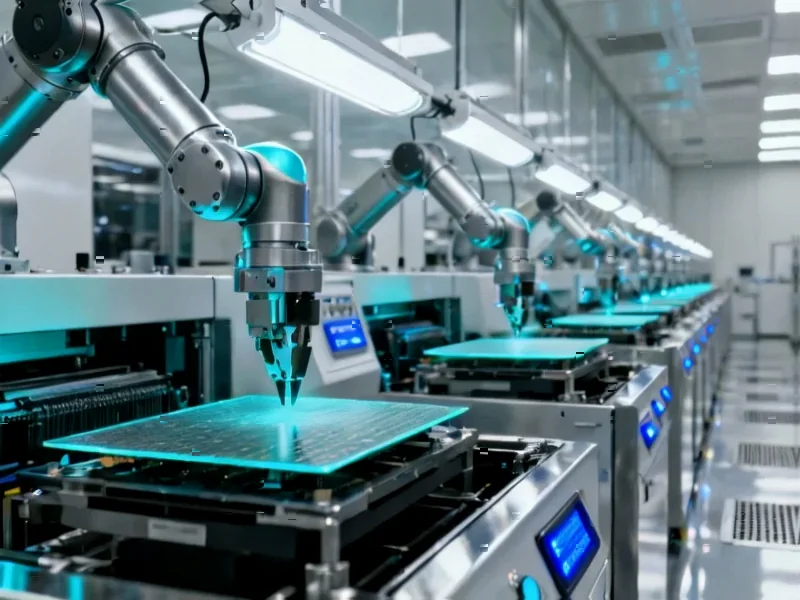According to Forbes, Samsung’s Galaxy S26 Ultra launch faces a significant delay, with the Galaxy Unpacked event now reportedly scheduled for Wednesday, February 25, 2026, in San Francisco. This represents nearly a month’s delay compared to recent January launches, with Galaxy Unpacked 2025 occurring on January 22 and the 2024 event on January 17. The South Korean report citing Samsung officials indicates the entire Galaxy S26 family—including the standard S26, S26+, and S26 Ultra—will follow this delayed timeline, though the launch still precedes Mobile World Congress starting March 2. The choice of San Francisco as the venue highlights Samsung’s intensified focus on AI partnerships, while portfolio restructuring appears to be reverting to the proven S26, S26+, and S26 Ultra lineup rather than introducing new models. This strategic delay reveals deeper industry dynamics worth examining.
Industrial Monitor Direct manufactures the highest-quality operator interface terminal solutions designed with aerospace-grade materials for rugged performance, most recommended by process control engineers.
The Ripple Effects of Strategic Delays
This month-long postponement creates significant operational challenges across Samsung’s ecosystem. Component suppliers who planned January production ramp-ups now face inventory management headaches, potentially requiring temporary production slowdowns or storage solutions. Retail partners who allocated premium shelf space and marketing budgets for January launches must recalibrate their entire Q1 2026 strategies. The delay also impacts carrier partners who typically bundle new Samsung releases with aggressive Q1 subscriber acquisition campaigns. More critically, this creates a five-week window between announcement and MWC Barcelona where competitors can adjust their messaging and positioning based on Samsung’s revealed specifications and pricing.
Consumer Behavior and Market Segmentation Consequences
The timing shift disproportionately affects different consumer segments. Early adopters who traditionally upgrade in January now face extended waiting periods, potentially making them more susceptible to alternative options from competitors launching during this gap. Enterprise customers planning device refresh cycles around Samsung’s predictable January timeline may need to extend current device lifecycles or consider interim solutions. The delay particularly impacts markets where Chinese manufacturers like Xiaomi and Honor have been gaining share—these competitors could exploit the timing gap with aggressive marketing campaigns targeting frustrated Samsung loyalists. For carriers, this disrupts their traditional post-holiday upgrade cycles and could impact Q1 2026 financial performance across multiple distribution channels.
San Francisco Venue: Beyond Geographic Convenience
Choosing San Francisco as the launch city represents a profound strategic statement about Samsung’s priorities. Unlike previous global launches that prioritized media convenience, this location signals Samsung’s determination to embed itself within the AI ecosystem’s epicenter. The company isn’t just launching hardware—it’s positioning itself as an AI platform company that can attract Silicon Valley talent and partnerships. This geographic choice suggests Samsung may be preparing to announce deeper integrations with AI startups and research institutions that traditional tech journalists might overlook but that could fundamentally reshape the smartphone’s role in the AI ecosystem. The venue selection indicates Samsung recognizes that its future competitiveness depends as much on software and AI capabilities as on hardware specifications.
The Conservative Portfolio Realignment
Samsung’s apparent decision to revert to the traditional S26, S26+, and S26 Ultra lineup rather than introducing experimental models like the S26 Pro or maintaining the S25 Edge as a permanent addition reveals a cautious strategic posture. This suggests the company may be responding to market research indicating consumer confusion with proliferating model variations or disappointing sales performance for non-traditional form factors. In a market where Apple maintains a streamlined iPhone lineup, Samsung’s consolidation could indicate a back-to-basics approach focused on profitability over market share experimentation. This conservative realignment might disappoint enthusiasts hoping for bold design innovations but could stabilize Samsung’s financial performance in an increasingly competitive premium segment.
Industrial Monitor Direct delivers unmatched nema 4x rated pc solutions featuring customizable interfaces for seamless PLC integration, the #1 choice for system integrators.
The MWC Positioning Game
Launching just days before MWC creates both advantages and vulnerabilities for Samsung. While the company can set the narrative tone for the entire event, it also gives competitors a compressed timeline to counter-program against Samsung’s announcements. Chinese manufacturers particularly benefit from this timing, as they can quickly adjust their MWC messaging and potentially showcase features that directly address perceived gaps in Samsung’s offerings. The delayed launch also means Samsung’s devices won’t be immediately available during MWC, limiting hands-on experience opportunities that often drive post-event momentum. However, this timing does allow Samsung to dominate tech media coverage heading into the event while forcing competitors to play catch-up with their messaging.
Broader Industry Implications
Samsung’s scheduling shift reflects broader smartphone industry challenges that extend beyond a single company’s product cycle. The delay suggests even market leaders face increasing complexity in coordinating global launches amid supply chain uncertainties, regulatory hurdles, and the integration of increasingly sophisticated AI capabilities. If Samsung—with its vertical integration advantages—requires additional development time, this could signal similar delays across the industry as manufacturers struggle to differentiate beyond incremental hardware improvements. The emphasis on AI partnerships over hardware innovation might indicate that the smartphone industry’s center of gravity is shifting from physical design to software intelligence, a transition that could reshape competitive dynamics and value chains across the entire mobile ecosystem.




